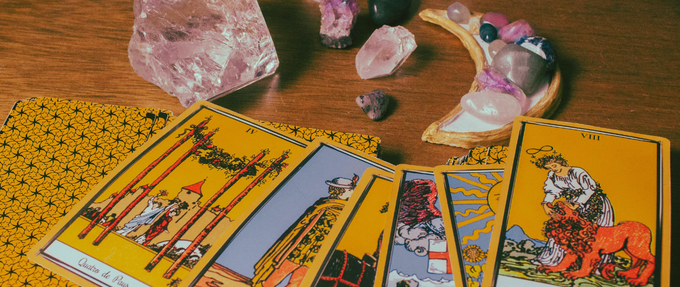I have a confession: I’m a huge tarot nerd. I love studying different approaches and styles to reading tarot, and I’ve got an embarrassingly large deck collection.
And while I’m now fluent in the language and art of tarot symbolism, I admit that it didn’t always feel so easy.
When I got my first tarot deck over 15 years ago and pulled that first card, I was disappointed to realize the card meant nothing to me. I was overwhelmed by the sheer amount of information on how to read tarot, and in the beginning, I felt discouraged.
Over time, and through dedicated practice and tons of study, I eventually developed personal fluency with the cards.
The best advice I can give: don’t expect to learn everything about tarot overnight. And don’t approach the tarot from the place of needing to become an expert.
The best tarot readers have an ongoing relationship with the cards—and relationships unfold and deepen over a lifetime.
How to Read Tarot Cards
Here are some of my best tips on how to learn to read tarot.
- Begin a daily card pull practice. I know, I know—this is annoying advice. But I promise that getting quality time with the cards is one of the best ways to get to know them. Pull a single card with your morning coffee and look at the pictures.
Forget what the card is “supposed” to mean or what the guidebook says. What does the artwork make you think of? How do you feel when you look at it? Let the card speak to you.
A daily practice will help you build a personal relationship with the card symbolism that simply can’t be learned in a book.
- Start a tarot journal. This doesn’t need to be complicated. In the morning, when you pull your card for the day, jot down some thoughts about what the card is saying to you and how it makes you feel. Revisit your entry at the end of the day and reflect on what happened. What are some new connections you can make to the card, based on your lived experience? Write a few notes down to capture your noticings.
Any journal will do, but you can also find custom tarot-themed journal like The Weiser Tarot Journal, The One Card Tarot Journal, or Tarot Tracker: A Year-LongJourney.
- Find a tarot community. You can do this easily by searching Instagram or TikTok keywords.
Find a few social media accounts to follow with creators who are sharing about tarot in a way that inspires you. Comment on their posts and start interacting with other people in those spaces. Join a local group or an online class.
My primary tarot teacher is Lindsay Mack of Tarot for the Wild Soul—her tarot classes are amazing and will help you find an authentic relationship to the cards. (She also has a new book coming out in spring of 2026!)
- Practice! Pull cards for your friends. Share spreads on social media and express your thoughts on what the cards evoke for you. I know this can be daunting, but the secret all the best tarot readers know? There is no one right way to interpret the cards, and the best way to learn how to read them is through practicing!
- Read books on tarot. I’m a huge book nerd so of course, I love learning about tarot through reading what others have written about it.
My only word of warning: don’t allow reading about tarot to replace getting to know the cards for yourself! I have found that the books make much more sense when I am actively engaging with the cards. You can jump to the section with my tarot book recs here!
Are Tarot Cards Evil?
Just for funsies, let's start with the elephant in the room. There are many urban legends and whispered horror stories about tarot cards leading to possessions, invoking unwanted spirits, or being just plain evil.
I feel like you already know my answer to this, but I know there are a lot of misconceptions about tarot cards so I’ll go ahead and answer definitively: no, tarot cards are not evil.
Each tarot card simply represents an archetype, which, put simply, is an amalgamation of common human experiences and rites of passage.
There are many ways to engage with tarot cards, from future-telling and divination to personal growth and evolution.
Personally, I love working with the cards as doorways into my own psyche and growth.
When I pull a card, the artwork speaks to me. Often, through pattern recognition, I will connect a theme in the card to something happening in my life.
The poetic nature of the cards means that I’m asked to think about my life experiences as mythopoetic and archetypal, which helps me consider my life in a larger context that gives me more perspective—rather than simply feeling lost or confused inside my own problems or challenges.
This archetypal lens brings insight and guidance to help you navigate life’s joys and sorrows with more grace, empathy, and finesse that you might have otherwise.
How Many Cards Are in a Tarot Deck
Traditionally, tarot card decks have 78 cards. There are 22 major arcana cards (which represent the big, universal archetypal themes humans experience) and 56 minor arcana cards (which represent the day-to-day archetypal themes of mundane life).
The minor arcana is comprised of four suits: Pentacles, which represent the earth element; Cups, which represent the water element; Swords, which represent the air element; and Wands, which represent the fire element.
Some tarot deck creators have creatively re-named the suits, and some include bonus cards that are special to that deck only, so occasionally you will find tarot decks with more than the 78-card standard.
Best Books on How to Read Tarot
Here are some of my favorite books on reading tarot. These will give you a nice range of approaches, from traditional to experimental and everything in between.
Enjoy these selections of books on tarot to savor.
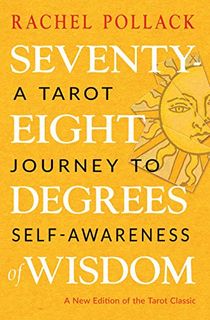
Seventy-Eight Degrees of Wisdom (Hardcover Gift Edition): A Tarot Journey to Self-Awareness
This is a classic. Rachel Pollack is a tarot OG and this book will give you a hearty foundation.
In this text, you’ll explore the traditional card meanings and spreads, as well as tips for creative interpretation. This book belongs in every seeker’s library.
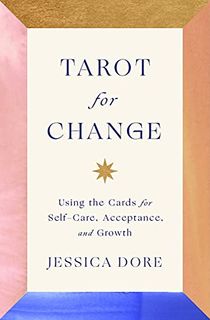
Tarot for Change: Using the Cards for Self-Care, Acceptance, and Growth
Personally, this is one of my favorite books on tarot, and I reference it more than any others I own. Rather than telling you how to read tarot, or even how to interpret, this text treats the cards as a living system that supports you in moving through (or initiating) change in your life.
Equal parts mystical and psychological, this book is as effortlessly poetic as it is practical and accessible.
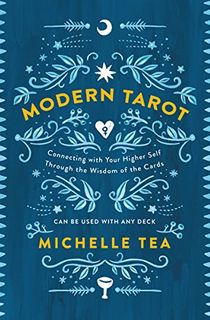
Modern Tarot: Connecting with Your Higher Self through the Wisdom of the Cards
This book updates an ancient, arcane system with a modern flavor. Whereas old-school styles of interpretation can feel patriarchal, homogenous, and heteronormative, Michelle Tea brings a refreshing take to the tarot that shows how this system can evolve to reflect modern sensibilities.
It’s a great addition to any tarot aficionado’s shelf.
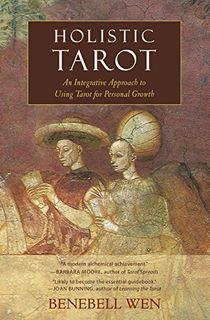
Holistic Tarot: An Integrative Approach to Using Tarot for Personal Growth
This book is a beast. It dives deep into the history of tarot, tarot lineages, styles of decks, styles of reading, tarot lore and symbolism, and more.
It is an incredibly thorough text and I highly recommend you keep it on hand as a reference book for case-by-case questions, rather than reading it all in one sitting.
It is most useful if you treat it almost as a magical tome you consult for arcane knowledge, Hogwarts-style
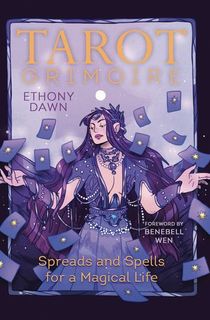
Tarot Grimoire
Let's face it—a huge part of what's so fun about tarot is the mystery of the system. This book will bring a lush depth to your tarot practice, infusing it with magical spells and unique spreads that will help you realize your dreams of being an actual modern-day witch.
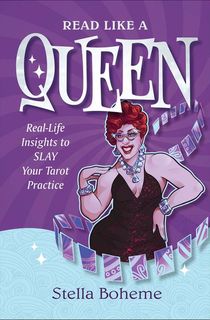
Read Like a Queen
This book is equal parts arcane knowledge and irreverent sass. This is a must-have book on your tarot shelf if you're looking to bring some levity to your tarot practice and ground the mystery of tarot into your every day life.
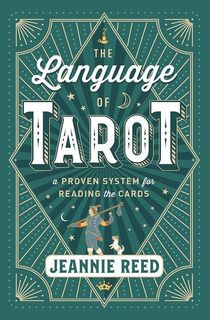
The Language of Tarot
This book is a great place to start if you're just learning the basics and want to practice in a proven, systemized way.
What's fun about this book is that it treats tarot readings like an actual science—presenting proven interpretive “recipes” that can help you decipher and decode what someone might be going through based on what card combinations they receive.
While I personally prefer a much more intuitive style of reading, I find that books like this can actually give a really solid foundation that you can then playfully adapt as you collect your own meaning-data in readings.
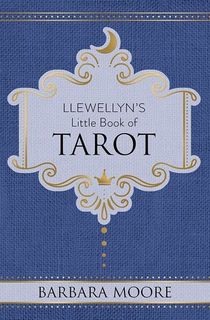
Llewellyn's Little Book of Tarot
I love Llewellyn's Little Books series because it provides accessible access points into complex systems. This is a great book to add to your collection if you're looking for a variety of creative activities, spreads, and tips to help you connect more deeply with the cards.
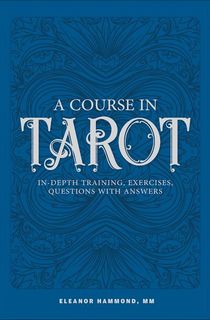
A Course in Tarot
If an actual tarot course isn't in the cards for you right now, I can't recommend this book enough. It's a tarot course in a book!
Inside, you'll find in-depth tarot trainings, spreads, and learning exercises to help you build greater skill and intimacy with your deck.
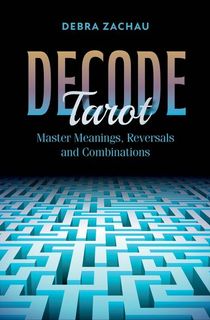
Decode Tarot
This book is a great choice if you've got a solid foundation, but you're ready to level up your skills.
Inside, you'll find profound insights and creative applications that will have you well on your way to tarot mastery.
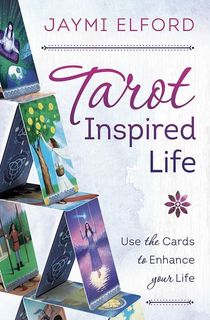
Tarot Inspired Life
I love this book because it brings the tarot out of the conceptual realm and grounds it in your actual day-to-day life.
In addition to teaching you ways to build a personal relationship with the cards, it also explores a variety of ways to work with tarot beyond the scope of a standard reading—such as for creative projects, meditation, or even connecting with your guides.
